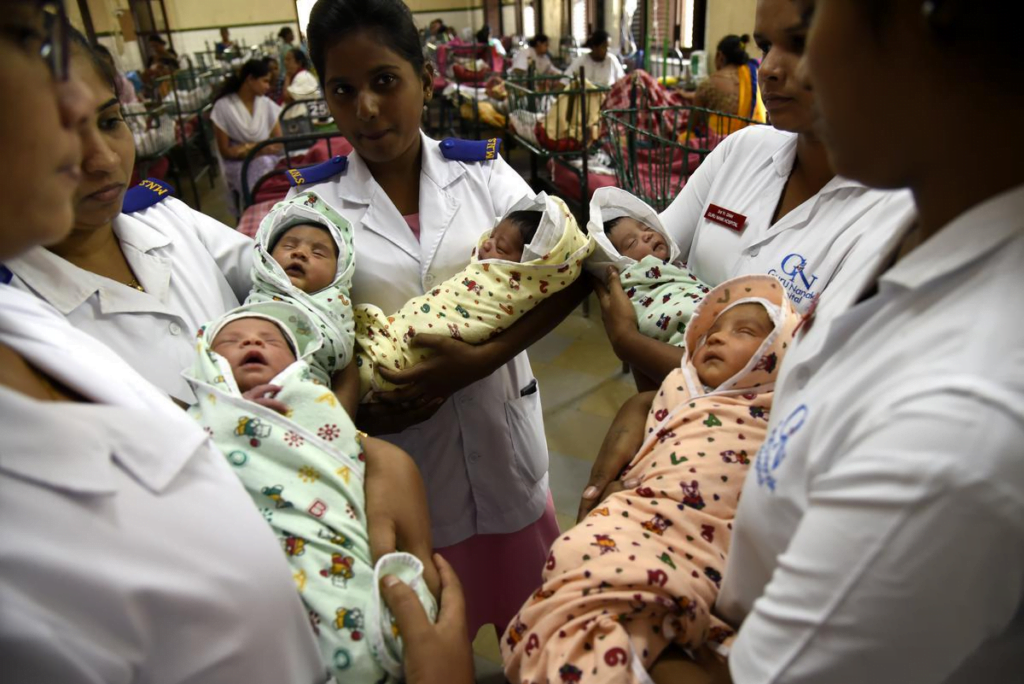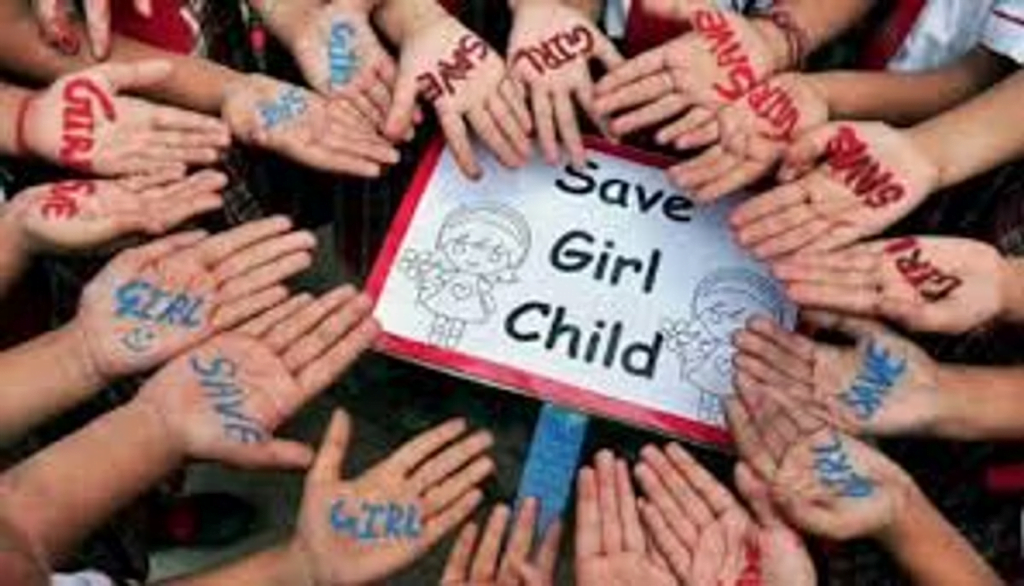A recent study by the Pew Research Center, a not-for-profit think tank that conducts research, surveys, studies, and analysis in the domain of social sciences, indicates that the widespread preference for sons in India is diminishing.
This study traces the disparity between sexes at birth in the national context, as well as looks at the preferences of major religious groups in the country. The four major religions analysed in this study are Hinduism, Islam, Christianity, and Sikhism.
Remainder religious groups and those not associated with any religious groups like Buddhists, Jains, atheists, etc., have not been looked at exclusively because the data available regarding their fertility and health was not sufficient. However, these smaller groups have been taken into account in the general population’s result. The study also references the recent National Family Health Survey report (NFHS-5).

India’s sex ratio at birth in the 1950s-1960s was about 105 male babies for every 100 female babies. This was the case before prenatal sex tests became accessible across India. Prenatal gender tests, that allowed prospective parents to know the sex of their child, began in the 70s.
In the 1980s, with the initiation of ultrasound technology, prenatal sex determination became very common and omnipresent all over the country.
1971 was the year when India legitimised abortions. Given the preference for boys, sex-selective abortions in the country came to an all-time high after the 70s. The sex ratio at birth widened sharply in the 1980s with 108 boys born per 100 girls.
This recent study inferred that the average number of “missing” girls in India dropped from approximately 4.8 lakhs in 2010 to 4.1 Lakhs in 2019. Here the term “missing” indicates the number of girls that were not born due to female selective abortions. The number of “missing” girls is calculated by comparing the number of girls born with the number of girls that were expected to be born, if there were no sex-selective abortions in the country
The gap widened even further in the 1990s with 110 boys per 100 girls born, which remained the case for the next 20 years. India’s census report of the year 2011 had a disproportionate sex ratio at birth of 111 boys per 100 girls. This growing crevice appears to be closing up slightly with the 2015-16 NFHS data showing 109 boys to 100 girls and the latest data that is of the year 2019-21 indicates 108 male births per 100 girls.
However, looking at the global picture, India on average had one of the most prejudiced sex ratios at birth after countries like Azerbaijan, China, Armenia, Vietnam, and Albania. This was concluded as per an analysis of the United Nations estimates done by the Pew Research Center for the two decades between 2002-2020.
Also read: The Girl Child And Her Search For An Identity Through Rights & Education

The latest data suggests that there is a decrease in the inclination of Indian families to engage in sex-selective abortion to ensure the birth of boys and not girls. This can be attributed to the collective efforts of the government as well as the public ranging from campaigns like “Save the girl child”, imposing a ban on prenatal sex discernment, and also the increment in wealth and education generally.
India made it illegal to disclose the sex of the fetus in 1996. Regardless, a minimum of 0.9 crores of female births went “missing” from the 2000-2019 records due to sex-selective abortions. This information was gathered from various NFHS reports and the national census in India.
This recent study inferred that the average number of “missing” girls in India dropped from approximately 4.8 lakhs in 2010 to 4.1 Lakhs in 2019. Here the term “missing” indicates the number of girls that were not born due to female selective abortions.
The number of “missing” girls is calculated by comparing the number of girls born with the number of girls that were expected to be born, if there were no sex-selective abortions in the country.

When we correlate religion and sex ratio, it can be seen that the statistics for Sikhs in the year 2001 is 130 boys to 100 girls. From 2019-21 it was 110 boys. This was the largest reduction out of all religious communities in India.
For Hindus, it was 111:100 boys to girls sex ratio in 2001 and 109 in 2019-21. For Muslims, it was 107 in the year 2001 and 106 in 2019-21. The statistics for Christians show 104 in 2001, and 103 in 2019-21.
The numbers given above are the latest(2019-21) and the oldest(2001) statistics. The 2001 data was referenced by the census and the 2019-21 numbers are based on the NFHS data and reports.
Sikhs make up 2 percent of the total population and make up 5 percent, or 4.4 lakhs of the “missing” girls out of the total “missing” girls. Hindus make up 80 percent of the total Indian population and account for 87 percent or 0.8 crores of the total “missing” girls. This indicates that Sikhs and Hindus have “missing” girls beyond their respective populations.
The general “son preference” is a uniform case across the country. This “daughter aversion” in India happens due to several reasons. To cite an example is financially considered more straining to raise daughters because of the practice of dowry in which parents often give away their savings. Sons pass on and carry the family lineage, and also dominate family property even though the laws say no to discrimination
Christians and Muslims on the other hand have a lower number of “missing” girls in comparison to other groups. Muslims account for 14 percent of the total population and have a share of 7 percent or 5.9 lakhs of “missing” girls out of the total. Finally, Christians account for 2.3 percent of the Indian population; their share of the total “missing” girls is 0.6 percent or 0.5 lakhs.
The study referenced here attempts to analyse child-rearing practices and attitudes and how these play out in the different religious groups. But it does not place the sole emphasis on religious affiliation as a cause for the distorted sex ratio at birth.
While religion is a crucial factor, it is also important to take into consideration other aspects like wealth, educational qualifications, location (urban/rural), and caste where dominant caste parents might not have a problem with having a daughter given their wealth and education but simultaneously, they also seem to practice rather strict gender roles.

Aborting girls is not only inherently wrong but also has far-reaching effects on society. International research has seen a correlation between societies having sex-selective abortions and “marriage squeeze” in a few decades.
Marriage squeeze is a situation where there is a scarcity of women of marriageable age and an excess of men looking for brides. It also gives rise to several serious issues like an increase in sex-related violence, crimes, and trafficking.
The general “son preference” is a uniform case across the country. This “daughter aversion” in India happens due to several reasons. To cite an example is financially considered more straining to raise daughters because of the practice of dowry in which parents often give away their savings. Sons pass on and carry the family lineage, and also dominate family property even though the laws say no to discrimination.
Though the sex ratio at birth looks slightly more promising, we still have a long way to go to ensure gender justice and equal treatment of individuals belonging to all genders.
Featured Image Source: The Week
About the author(s)
Tuba is currently pursuing an Undergraduate Degree in political science, at the Delhi University. She likes reading about current affairs and also loves cats, movies, k-dramas, chai, and staying in. At other times, you would probably find her taking pictures of the sky, if not listening to music




